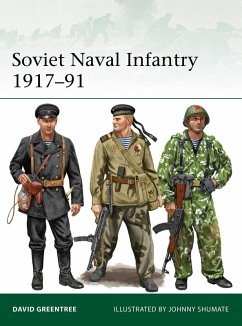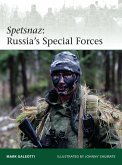Drawing upon Soviet sources, this book assesses the evolving organization, uniforms, insignia, weaponry and personal equipment of Soviet naval infantry units from 1917 to 1991.
Featuring eight plates of specially commissioned artwork alongside carefully chosen archive photographs, this study charts the history and appearance of the Soviet Union's naval infantry, from the October Revolution to the end of the Soviet era.
Although Russian naval infantry achieved fame during the October Revolution they were quickly disbanded, only being re-established in 1939. Following the Axis invasion of 1941 some 500,000 Soviet Navy personnel served on land, fighting in the defence of Leningrad, Odessa and Sevastopol and the recapture of the Crimea in 1943-44; Soviet naval troops also participated in the invasion of Manchuria in 1945.
During the Cold War era the Soviet Union developed an amphibious assault capability that had a vital strategic role - to capture an aggressor's geographical exits to the oceans and thereby forestall threats to Soviet submarine bases. Naval infantry forces could deploy a wealth of firepower assets, while the use of amphibious ships, hovercraft and helicopters aided their rapid deployment, even amid ice-bound terrain in the Arctic. All of these developments are described and illustrated in absorbing detail in this study.
Featuring eight plates of specially commissioned artwork alongside carefully chosen archive photographs, this study charts the history and appearance of the Soviet Union's naval infantry, from the October Revolution to the end of the Soviet era.
Although Russian naval infantry achieved fame during the October Revolution they were quickly disbanded, only being re-established in 1939. Following the Axis invasion of 1941 some 500,000 Soviet Navy personnel served on land, fighting in the defence of Leningrad, Odessa and Sevastopol and the recapture of the Crimea in 1943-44; Soviet naval troops also participated in the invasion of Manchuria in 1945.
During the Cold War era the Soviet Union developed an amphibious assault capability that had a vital strategic role - to capture an aggressor's geographical exits to the oceans and thereby forestall threats to Soviet submarine bases. Naval infantry forces could deploy a wealth of firepower assets, while the use of amphibious ships, hovercraft and helicopters aided their rapid deployment, even amid ice-bound terrain in the Arctic. All of these developments are described and illustrated in absorbing detail in this study.









